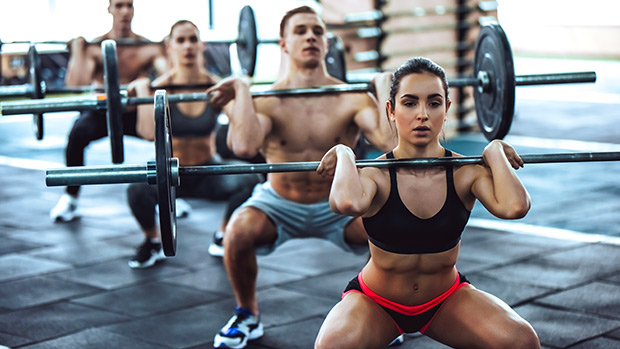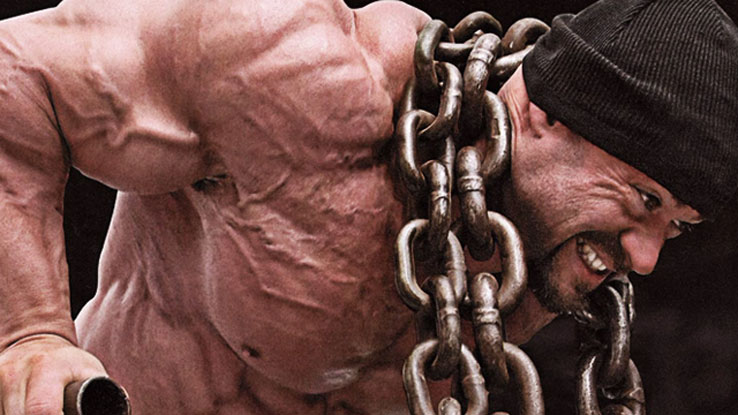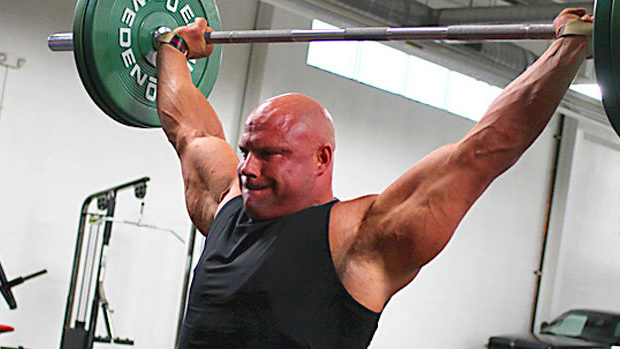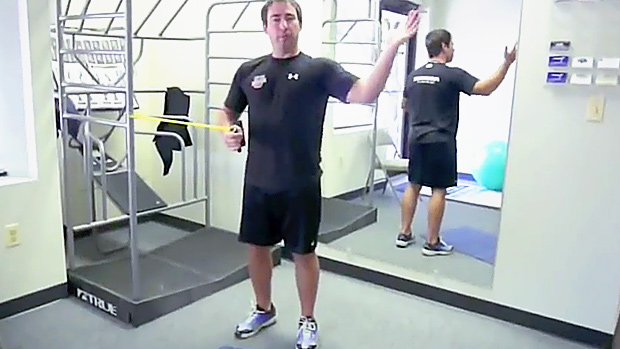What to Know Before You Start CrossFit
Most lifters who don't do CrossFit will badmouth it without ever trying it. But on the flip side, many CrossFitters provoke this behavior by acting like CrossFit is God's gift to fitness. They're completely blinded by their obsession. So don't start CrossFit before you know the whole, unbiased truth.
There's a reasonable way of looking at anything without being adamantly for or against it. And just like any other form of exercise, CrossFit has its pros and cons. Let's take an objective look at what they get right and wrong.
CrossFit's community is seldom rivaled. They even have their own language. You walk into what they call a "box," and the atmosphere is defined by blood, sweat, tears, laughter, and high-fives. Overcoming a physical challenge forms bonds between people.
Throw in the competitions, performance benchmarks, worldwide community, its own professional sport on TV, and you've got yourself a thriving culture. Many couldn't care less about the critics. Their world is other CrossFitters. That sense of camaraderie keeps them consistent and coming back for more.
CrossFitters relentlessly push each other. This has its downsides and should be tailored towards individuals, but hard training is a breath of fresh air in an age where people act like sissies. You often see CrossFitters with epic physiques, not because their programming is necessarily optimal, but because their sheer intensity has eclipsed any programming shortcomings.
Most don't even train for hypertrophy, yet a lot of them have slabs of meat that PubMed warriors could only dream of. The nature of short rest periods, predetermined WODS, and camaraderie pushes people to work hard. People will keep slamming balls far past ideal body mechanics and will keep a bar in motion for minutes because that's what's prescribed by the coach.
I'm not advocating for training past failure, but somebody training a little too hard will get better results than somebody who never trains hard enough. Average Joes and Janes push themselves in CrossFit in a way they never have before.
If you were to create the ultimate piece of exercise equipment, it would be portable, versatile, create lots of muscle activation, and have a high degree of movement freedom. That perfectly describes gymnastic rings, and there's plenty at every CrossFit box.
It's an old-school staple for Olympic athletes but not so popular among modern fitness enthusiasts. While kipping pull-ups are questionable, being able to do strict momentum-less exercises on gymnastic rings will impose lots of mechanical tension on nearly every upper-body muscle, and it'll teach you to stabilize your body.
Get anyone to progress to weighted ring pull-ups, dips, or lever-type exercises, and you've got somebody who'll eventually have absurd levels of muscle and strength. Kudos to CrossFit for including ring work.
The conditioning you build from CrossFit is almost unreal. CrossFit athletes can frequently train a variety of body parts for grueling amounts of time. The volume they tolerate is mind-boggling, considering many CrossFit boxes are full of ordinary people.
CrossFit is often my reminder that I could always have better conditioning and can likely tolerate more volume than I think. After all, the WOD portion of each workout is essentially a long HIIT session.
Strength athletes often insult CrossFit, but CrossFit athletes often encompass far more fitness qualities. Doing one-rep maxes on three lifts is cute, but elite CrossFitters can fight off an army of centaurs and then go a few rounds on the Assault Bike. Just imagining two minutes on the Assault Bike gives me anxiety.
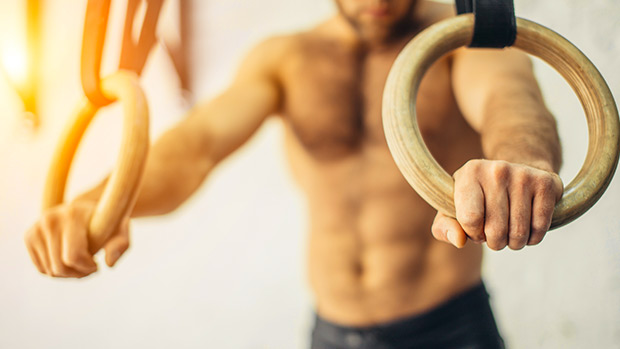
CrossFit gets some flack, and a lot of it is valid. Now, keep in mind that not all CrossFit boxes and coaches train people the same way, but here are a few things to watch out for.
The conditioning aspect is admirable, but it can also be a drawback. While it's great to have an elite level of work capacity, most people simply want to create a jaw-dropping physique. Hammering your body with metabolic conditioning can have diminishing returns.
Research finds the more cardio-y you get with your training, the more it interferes with adaptations for strength and hypertrophy (1). Proper and effective strength training involves long enough rest periods to maximize strength and muscle growth. Circuit training isn't the best way to get there. It's the muscle growth that creates the recomposition (a higher muscle-to-fat ratio), making you look like the hottest mom/dad at the pool.
The nature of CrossFit doesn't prioritize strength and hypertrophy. This isn't to say you can't build these qualities with CrossFit, but they're hindered compared to someone who focuses on more traditional strength training where you're not supersetting double-unders with thrusters.
You not only do tons of cardio in CrossFit, but you do it at extremely high intensities. This eats into your recovery capacity, so you can't use as much volume or intensity even if you do strength-train outside of CrossFit.
CrossFit is generally averse to single joint or isolation-type movements. This contributes to the myth that things like biceps curls aren't functional if you can instead do a compound exercise like a row.
CrossFit would rather replace isolation exercise with more complex, skill-intensive moves like burpees, kipping pull-ups, box jumps, and Olympic lifts.
However, isolation exercises are extremely useful for maximizing muscle growth, training all anatomical functions, and managing fatigue. Plus, you can do these while emphasizing the eccentric or negative portion of the rep, which is non-existent in many CrossFit exercises like box jumps and ball slams.
Although isolation exercises usually train one joint, they're actually extremely functional – and even necessary – for optimal training. For example, you can't train the rectus femoris to any meaningful degree without leg extensions. You can't train the long head of the triceps fully without a single-joint movement. You also can't train all divisions of the glutes without bridge and abduction work.
I can go on and on with more examples for nearly every body part. The best physiques also come from the bodybuilding world, where maximizing muscle growth means including isolation work like leg curls, hip abduction, lateral raises, and lots of biceps curls for the girls.
Also, your body only tolerates so much fatigue. Single-joint exercises are a great way to get more training stimulus with minimal fatigue while managing injuries. If you've got a bad shoulder, doing more presses and handstand push-ups without isolation work is a recipe for tissue degradation.
Most CrossFit facilities have some unique equipment like gymnastic rings, ropes, and tires. However, they seem to wear a badge of honor for having minimal strength-training machines like traditional gyms.
Some CrossFit gyms might have a cable stack here and there, but make no mistake: CrossFit is part of the reason so many people have negative misconceptions about machines. You might hear some of these claims from CrossFit coaches:
"Machines force your body into certain positions."
"Machines aren't functional, bruh."
"Machines take out the stabilizer muscles."
"Machines are for rehabbing grandmas and beginners who can't lift free weights."
I've heard all this nonsense before. Contrary to what machine-haters think, machines have been building athletic bodies for decades. Many have excellent resistance curves and force angles. They allow you to distribute tension-based stress across the muscles you're targeting in ways free weights can't.
Free weights only resist downward gravity. They can't angle and contour to various body structures. Their design can be highly limiting for range of motion and anatomy as well.
Plus, machines are highly stimulating for targeted muscle groups and can fill the gaps in your training. Long story short, smart lifters use them. Dumb lifters act like they're too cool for them.
The idea that CrossFit is an injury-death-sentence is overblown. That being said, CrossFit's nature has an unfavorable cost-to-benefit ratio. Let me explain.
Most people want to look super jacked and be fit enough. Bodybuilding styles of training can accomplish this at a fraction of the risk. Bodybuilders who train very close to (or up to) failure experience only 0.24-1 injury per 1000 hours on average (2).
Powerlifters who train for longer sessions than most athletes with higher absolute loads and with repetitive exercises only experience about double the injuries as bodybuilders.
However, CrossFitters experience over three times as many injuries as bodybuilders per 1000 hours on average. The issue? The very nature of CrossFit.
With CrossFit's social nature, many people aren't training with mindfulness or the goal of merely stimulating their bodies. They're focused on annihilating the workout or beating the person next to them. Competition isn't bad on occasion, but as a daily workout, it can do more harm than good. Form is compromised, and you push far past your ideal limits to outperform others.
If CrossFit were to mitigate enough variables within their workouts to make it minimally injurious to match bodybuilding, it wouldn't be CrossFit anymore. There would be no more group competitions, ultra-high rep training, Olympic lifts, short rest periods, fast eccentrics, and mixing of strength training and cardio. The unrelenting pressure to finish WODs at all costs would be gone too.
In other words, if you make CrossFit less injurious, you also water down much of the why people love CrossFit.
CrossFit has done a lot of good for the fitness community. People who love CrossFit will die for it. The novelty is there, and it does get people in shape. At the elite level, the athletes are epic. Just consider the potential drawbacks before jumping in.
- Wilson. "Concurrent Training: A Meta-Analysis Examining Interference of Aerobic and Resistance Exercises." Journal of Strength and Conditioning Research, U.S. National Library of Medicine, PUBMED.
- PW; Keogh JW; Winwood. "The Epidemiology of Injuries across the Weight-Training Sports." Sports Medicine (Auckland, N.Z.), U.S. National Library of Medicine, PUBMED.
T Nation earns from qualifying purchases as an Amazon Associate. Read more about our policy.
